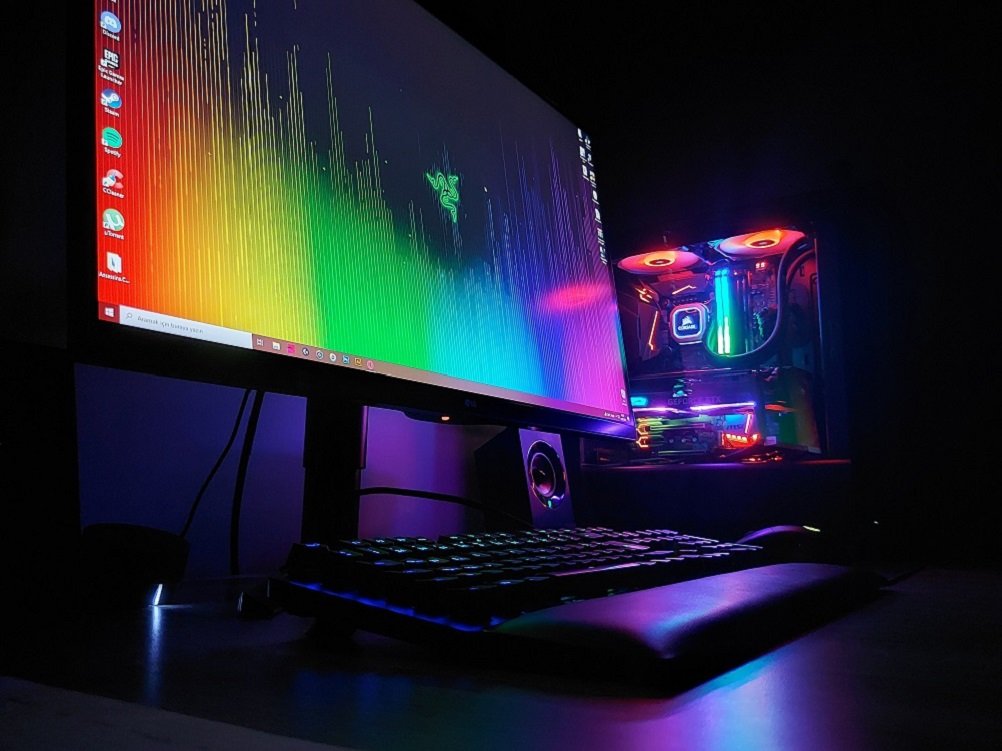When it comes to gaming, one question always lingers in the minds of gamers; should they buy a pre-built gaming PC or should they build their own? While it may be tempting to just buy a pre-built system, there are several benefits that come with building your own custom gaming PC.
These benefits include getting exactly the components you want, being able to easily upgrade your system as new components become available, and of course, the satisfaction that comes with building something yourself. Plus, it’s not nearly as difficult as you may think.
In this guide, we’ll show you how to build your very own gaming PC step-by-step.
Decide on Your Budget
The first step in any PC build is deciding on your budget. This will determine not only the overall cost of your build but also the specs of the individual components you’ll be able to afford. It’s important to remember that you don’t need to break the bank in order to build a great gaming PC—it’s entirely possible to put together a high-performance rig without spending a fortune.
Step #1. Choose and Install Different Components
Get the Right Components
The first step to build a gaming PC is, of course, getting all the right components. You’ll need a CPU, motherboard, GPU, RAM, power supply, SSD (or hard drive), and a case. Once you have all the parts, it’s time to move on to the next step.
Pick and Install the CPU
Once you know how much money you have to spend, it’s time to start picking out individual components. The CPU (central processing unit) is typically the most expensive component in any build, so it’s important to choose wisely. If you’re on a tight budget, we recommend opting for an Intel Core i5 or AMD Ryzen 5 processor. These CPUs offer excellent performance for the price and should be more than enough for most gamers.
Installing the CPU:
After choosing the CPU, you need to install it. Install it into the motherboard.
- The first thing you’ll need to do is unlock the socket by lifting up the lever on one side.
- Then carefully insert the CPU into the socket and make sure it’s properly aligned.
- Once it is, lower the lever back into place and lock it down.
- Next, apply some thermal paste to the top of the CPU (make sure not to use too much!)
- Then secure the CPU cooler onto the top of the CPU using screws or brackets (depending on what type of cooler you have).
- That’s it for installing the CPU! Onto installing RAM next.
Install RAM
Memory installation is pretty straightforward; just line up your stick (or sticks) of RAM with the slots on your motherboard and then gently push them down until you hear a “click” indicating that they are locked in place Now would also be a good time to plug in any case fans or other peripherals that you may have before moving on to installing your GPU!
Choose and Install Graphics Cards
The graphics card is another critical part of any gaming PC, and it’s important to choose one that matches the performance requirements of the games you want to play.
Budget-conscious gamers will want to look at cards like the Nvidia GTX 1660 Ti or AMD RX 580, while those with more money to spend can opt for something like the Nvidia RTX 2080 Ti or AMD Vega 64. No matter what card you choose, make sure it has at least 3GB of VRAM (video RAM).
Installing Your Graphics Card:
Installing a graphics card is pretty simple; just locate an empty PCI-E slot on your motherboard and then insert your card into it until it clicks into place. Make sure to connect any power cables that your card may need from your power supply as well. You may also need to connect your graphics card to your monitor using an HDMI cable or DisplayPort cable if you want to see anything onscreen now
That concludes the installation of all major components! Congrats! You did it! But we’re not quite done yet….
Step #2. Install Storage Devices & Connect Peripherals
Now it’s time to install storage devices like your SSD or hard drive If you have an SSD, congratulations–the hardest part is already done for you!
Just locate an empty SATA port on your motherboard and then insert your SSD into it Easy peasy! Hard drives are a bit more complicated however For best results (and speed), we recommend that you install your hard drive(s) into one(or more) of the open bays in your case.
After drives are installed & secured into place with screws–it’s time for cables. At this stage of the gaming PC build, one should need 2 types of cables left: SATA cables & Power cables
For SATA cables–just match each end up with its appropriate device Slot Then do so Gently push until they snap Into place locking them there.
Power cables will look different based on which type A Female connector GPU You Have but again connecting these Irrelatively easy Just make sure to connect each cable To both The Device It needs power And Also To The PSU Unit Itself
Step #3. Assemble Your PC & Install Windows
Once you have all the components for your gaming PC, it’s time to put it all together! If you’ve never built a gaming PC before, don’t worry—it’s not as difficult as it looks. There are plenty of great guides and video tutorials online that can walk you through the process step by step. Once your PC is up and running, all that’s left is to install Windows and start gaming!
Conclusion
Building a gaming PC can be an incredibly rewarding experience. Not only do you get to choose every single component that goes into your build, but you also get to see your PC come to life as you assemble it piece by piece. Follow these steps and you’ll be a custom PC builder and well on your way to putting together the ultimate gaming machine.
Read More: Top Games in 2023


